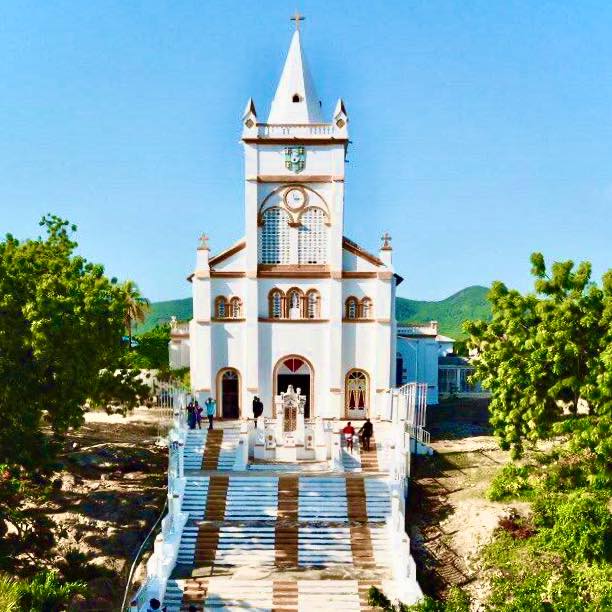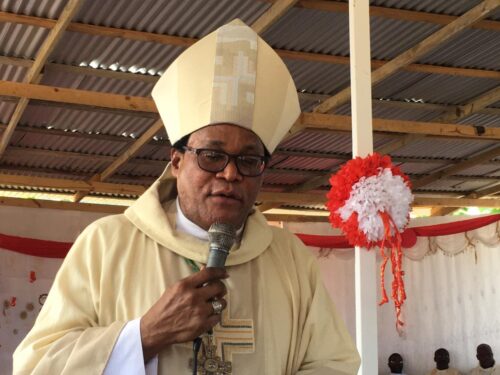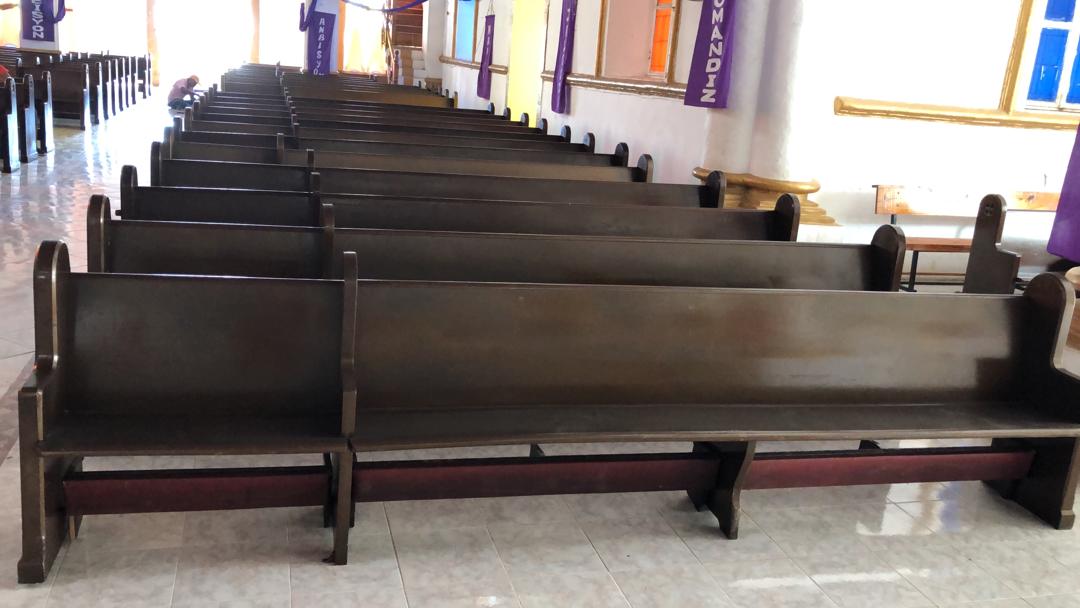
WINDSOR TERRACE — Gifts from the Diocese of Brooklyn arrived just in time for Christmas at the historic Cathedral of St. Anne in Anse-à-Veau, Haiti.
However, these items were much too big to be placed in stockings and hung by the chimney with care. Instead, huge metal shipping crates held dozens of heavy, oak church pews donated to the cathedral from the Diocese of Brooklyn’s Office of Patrimony.
In its 12th year, the Office of Patrimony stores and cares for items that once adorned churches, schools, and other buildings in the diocese. Included are life-size statues, sculptures, light fixtures, stain-glass windows, and heavy front doors to churches, to name a few. Some items are more than a century old, parishioners donated many, and all are considered remarkable for the holiness they represent.
The bishop receiving the gifts in Haiti was ecstatic to receive the pews, some chairs, and a church bell.
“The light of your love for the poor has shown through the many gifts you have graciously sent to our diocese for the cathedral,” Bishop Pierre André Dumas wrote in a thank you letter. “We are double enthused to learn of a second container on the way containing more benches and chairs.”

Bishop Dumas addressed the letter to Bishop Nicholas DiMarzio of Brooklyn, who referred questions about the gift to Msgr. John Bracken, director of the Office of the Patrimony.
Msgr. Bracken described how the historical pieces from former church buildings become warehoused in a former auto dealership and repair shop in Bushwick.
Typically, representatives of churches contact the office to learn if it has a furnishing that it needs, like a statue of a patron saint. If so, the requesting church pays a donation to the church where the item originated.
If the statue came from a parish that consolidated with another, the donation goes to the new entity, Msgr. Bracken said.
The Office of Patrimony works to ensure a piece gets an appropriate destination.
“We don’t do anything privately,” Msgr. Bracken said. “You can’t come to the warehouse and pick out something for your living room. It can only go to a church institution.”
Transporting items, like shipping pews out of the country, can be challenging.
“Pews are very heavy,” Msgr. Bracken said. “They’re oak, bulky, and hard to move. They take up so much room, so we have to stack them to get them into containers.”
No donation was required for all the items sent to Anse-à-Veau, according to Msgr. Bracken.
“That was all a gift from the diocese,” he added. “There was nothing expected. My preference is always to see if we can place things where they’re most needed.”
One such place could be a parish or diocese in a region hit by natural disasters, Msgr. Bracken said.
Alphonse Labissière, a native of Haiti who works in New York City, helped arrange for the pews. He is president of CORA-Inc., a non-profit organization that promotes economic and community development in and around Anse-à-Veau.
He recounted how a deadly earthquake rattled Haiti, including Anse-à-Veau, in 2010. Next came Hurricane Matthew in 2016.
Labissière said the Cathedral of St. Anne was damaged but not demolished. The renovation work now is to prepare the building for the tricentennial celebration of Anse-à-Veau in July.
“We still have a lot of work to do,” Labissière said. “Since 1938, the cathedral had three bells, but they are no longer working. Now we have one; we’re still looking for two others.”
In his letter, Bishop Dumas praised Msgr. Bracken, Labissière, and “their associated teams.” He said they all “tirelessly worked” to ensure the items reached Haiti.
In conclusion, he told Bishop DiMarzio, “The benches, bell, and chairs will facilitate the worship of God. Thank you, my dear brother.”

